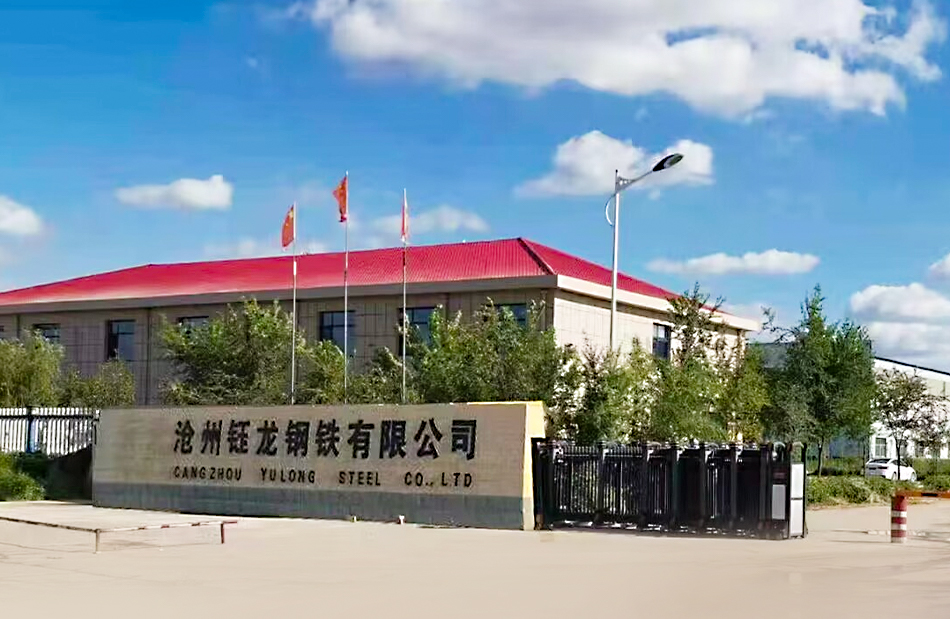-
Cangzhou Yulong Steel Co., Ltd.
-
Phone:
+86 13303177267 -
Email:
admin@ylsteelfittings.com
- English
- Arabic
- Italian
- Spanish
- Portuguese
- German
- kazakh
- Persian
- Greek
- French
- Russian
- Polish
- Thai
- Indonesian
- Vietnamese
- Zulu
- Korean
- Uzbek
- Hindi
- Serbian
- Malay
- Ukrainian
- Gujarati
- Haitian Creole
- hausa
- hawaiian
- Hebrew
- Miao
- Hungarian
- Icelandic
- igbo
- irish
- Japanese
- Javanese
- Kannada
- Khmer
- Rwandese
- Afrikaans
- Albanian
- Amharic
- Armenian
- Azerbaijani
- Basque
- Belarusian
- Bengali
- Bosnian
- Bulgarian
- Catalan
- Cebuano
- China
- China (Taiwan)
- Corsican
- Croatian
- Czech
- Danish
- Esperanto
- Estonian
- Finnish
- Frisian
- Galician
- Georgian
- Kurdish
- Kyrgyz
- Lao
- Latin
- Latvian
- Lithuanian
- Luxembourgish
- Macedonian
- Malgashi
- Malayalam
- Maltese
- Maori
- Marathi
- Mongolian
- Myanmar
- Nepali
- Norwegian
- Norwegian
- Occitan
- Pashto
- Dutch
- Punjabi
- Romanian
- Samoan
- Scottish Gaelic
- Sesotho
- Shona
- Sindhi
- Sinhala
- Slovak
- Slovenian
- Somali
- Sundanese
- Swahili
- Swedish
- Tagalog
- Tajik
- Tamil
- Tatar
- Telugu
- Turkish
- Turkmen
- Urdu
- Uighur
- Welsh
- Bantu
- Yiddish
- Yoruba

Sep . 16, 2024 06:12 Back to list
hose thread size
Understanding Hose Thread Size A Comprehensive Guide
Hose thread size is an essential consideration for anyone involved in plumbing, gardening, or industrial applications. It refers to the diameter and configuration of threads on hoses and fittings, which determine their compatibility and functionality. Understanding these specifications can help prevent leaks, ensure a tight fit, and improve the overall efficiency of fluid transfer systems.
Types of Hose Threads
There are various hose thread types, but the most common are National Hose (NH), also known as NST (National Standard Thread), and Garden Hose Threads (GHT). Both types have unique characteristics and applications.
1. National Hose (NH/NST) Threads This standard was developed for fire hoses and is widely used in various plumbing applications. NH threads have a diameter specified in inches, with a pitch of 7.5 threads per inch. The most common size is the 1.5-inch NH fitting, commonly used in agricultural and construction settings. The compatibility of NH fittings with various adapters makes them versatile for different tasks, from firefighting to watering large fields.
2. Garden Hose Threads (GHT) GHT is typically found on standard garden hoses in North America. These threads have a diameter of 3/4 inch and, like NH threads, have a pitch of 11.5 threads per inch. Garden hoses are designed for residential watering gardens, washing vehicles, and various outdoor tasks. Understanding these hose sizes is crucial when connecting hoses to faucets or sprinklers to avoid compatibility issues.
3. British Standard Pipe (BSP) Threads While not as common in the United States, British Standard Pipe threads are widely used in Europe and other parts of the world. There are two main types BSP parallel or G threads and BSP tapered threads. The G threads are generally used for hoses, while the tapered threads provide a tighter seal. If one is working in an international context or with import equipment, familiarity with BSP is essential.
hose thread size

Measuring Hose Thread Size
When measuring hose thread size, note the outside diameter of the threaded portion and the pitch of the threads. A caliper can provide an accurate measurement for the diameter. To determine the pitch, measure the distance between threads and calculate how many threads fit into one inch. This precision is critical for ensuring that the correct fittings and connectors are used, thereby avoiding flow issues or system failures.
Importance of Matching Hose Threads
Properly matching hose threads is crucial for preventing leaks and maintaining pressure in hydraulic and plumbing systems. Mismatched threads can lead to significant fluid loss, which not only reduces efficiency but can also cause environmental harm. Using the correct thread size and type also ensures longevity and reliability in the connections, thus saving time and resources in the long run.
Conclusion
Understanding hose thread sizes is vital for anyone working with hoses, whether in a domestic, commercial, or industrial setting. Knowledge of different thread types, the ability to measure them accurately, and the importance of matching them properly are essential skills that enhance operational efficiency and fluid management. Proper connections save time, reduce waste, and ensure the tasks you aim to accomplish are executed smoothly.
Latest news
-
ANSI 150P SS304 SO FLANGE
NewsFeb.14,2025
-
ASTM A333GR6 STEEL PIPE
NewsJan.20,2025
-
ANSI B16.5 WELDING NECK FLANGE
NewsJan.15,2026
-
ANSI B16.5 SLIP-ON FLANGE
NewsApr.19,2024
-
SABS 1123 FLANGE
NewsJan.15,2025
-
DIN86044 PLATE FLANGE
NewsApr.19,2024
-
DIN2527 BLIND FLANGE
NewsApr.12,2024
-
JIS B2311 Butt-Welding Fittings LR/SR 45°/90° /180°Seamless/Weld
NewsApr.23,2024











